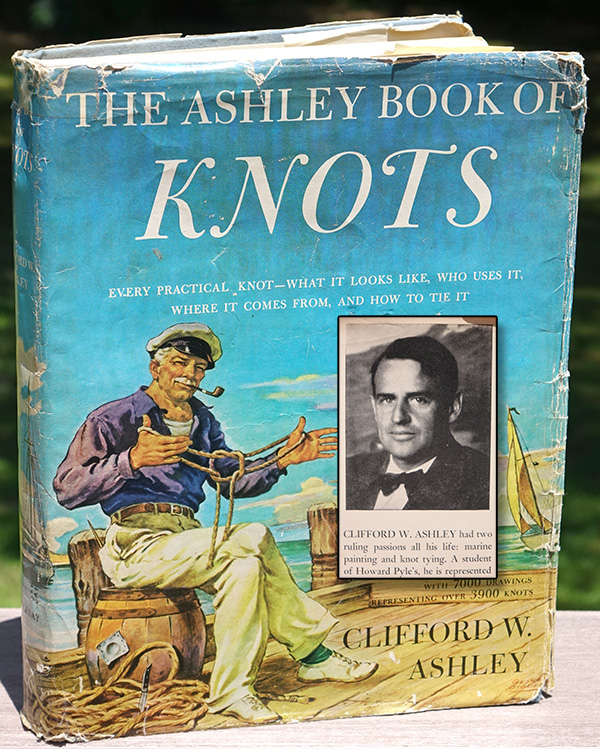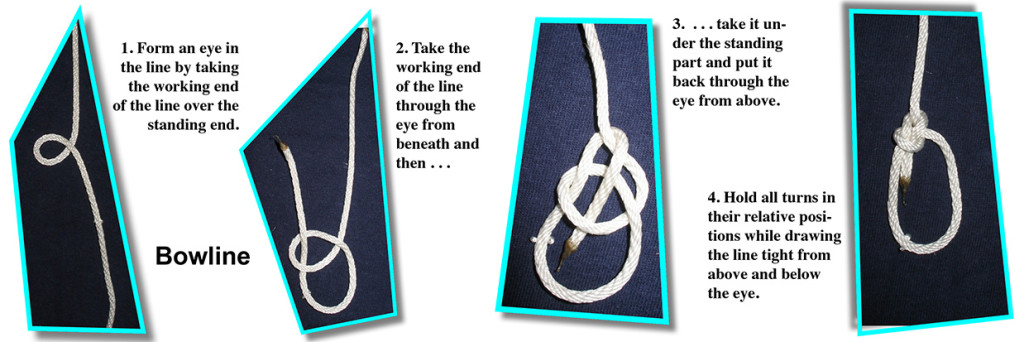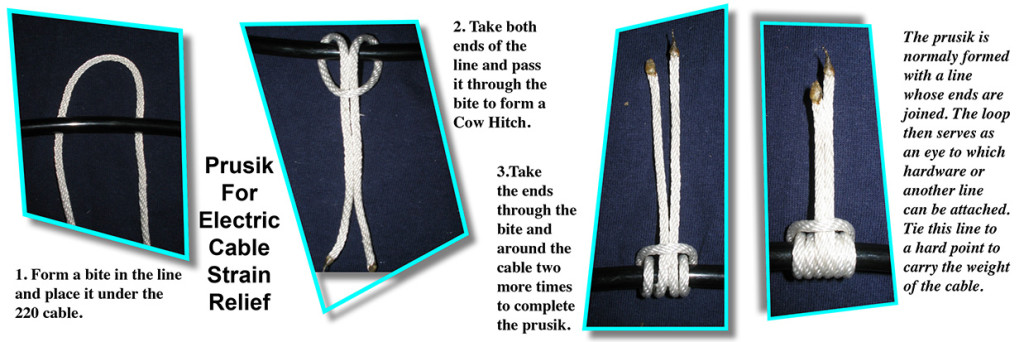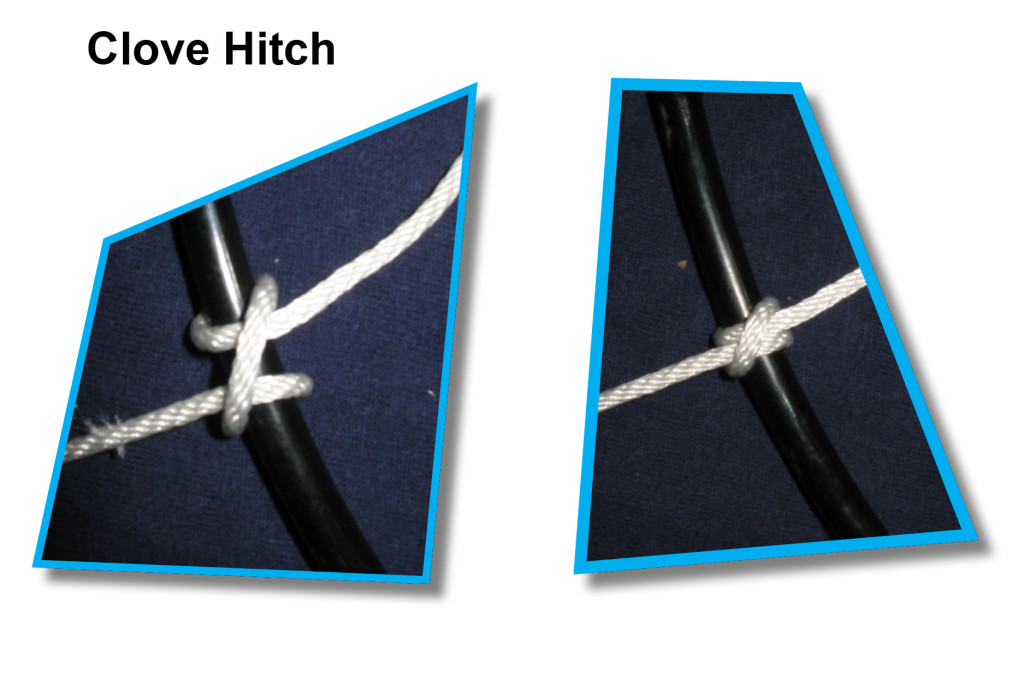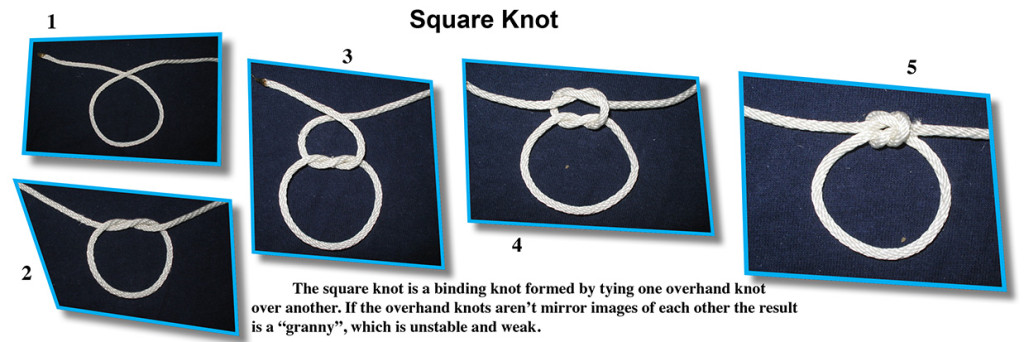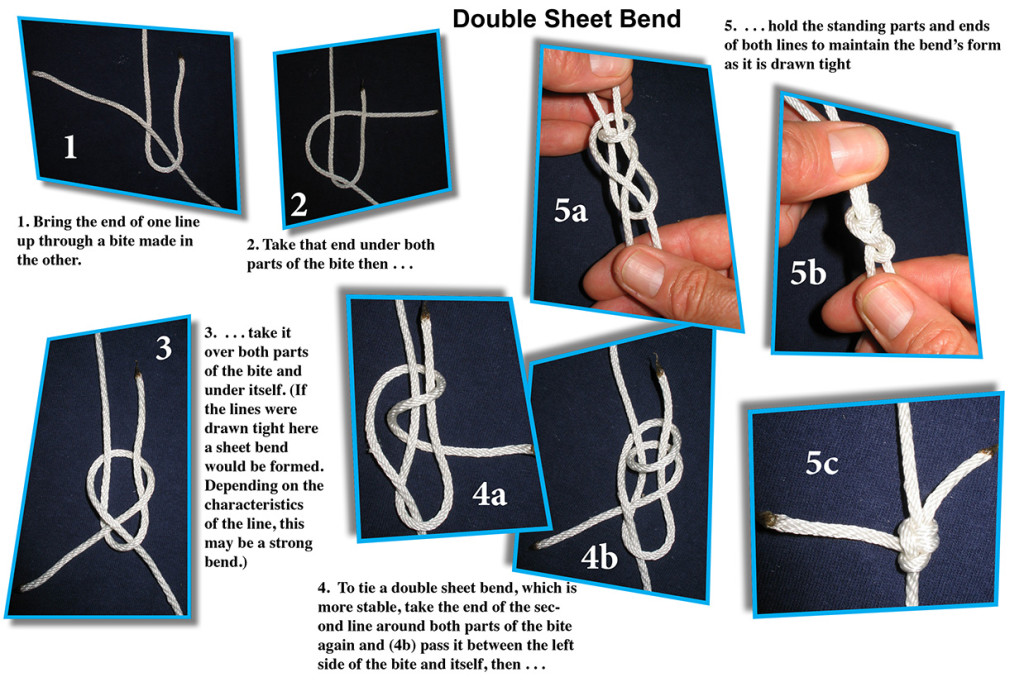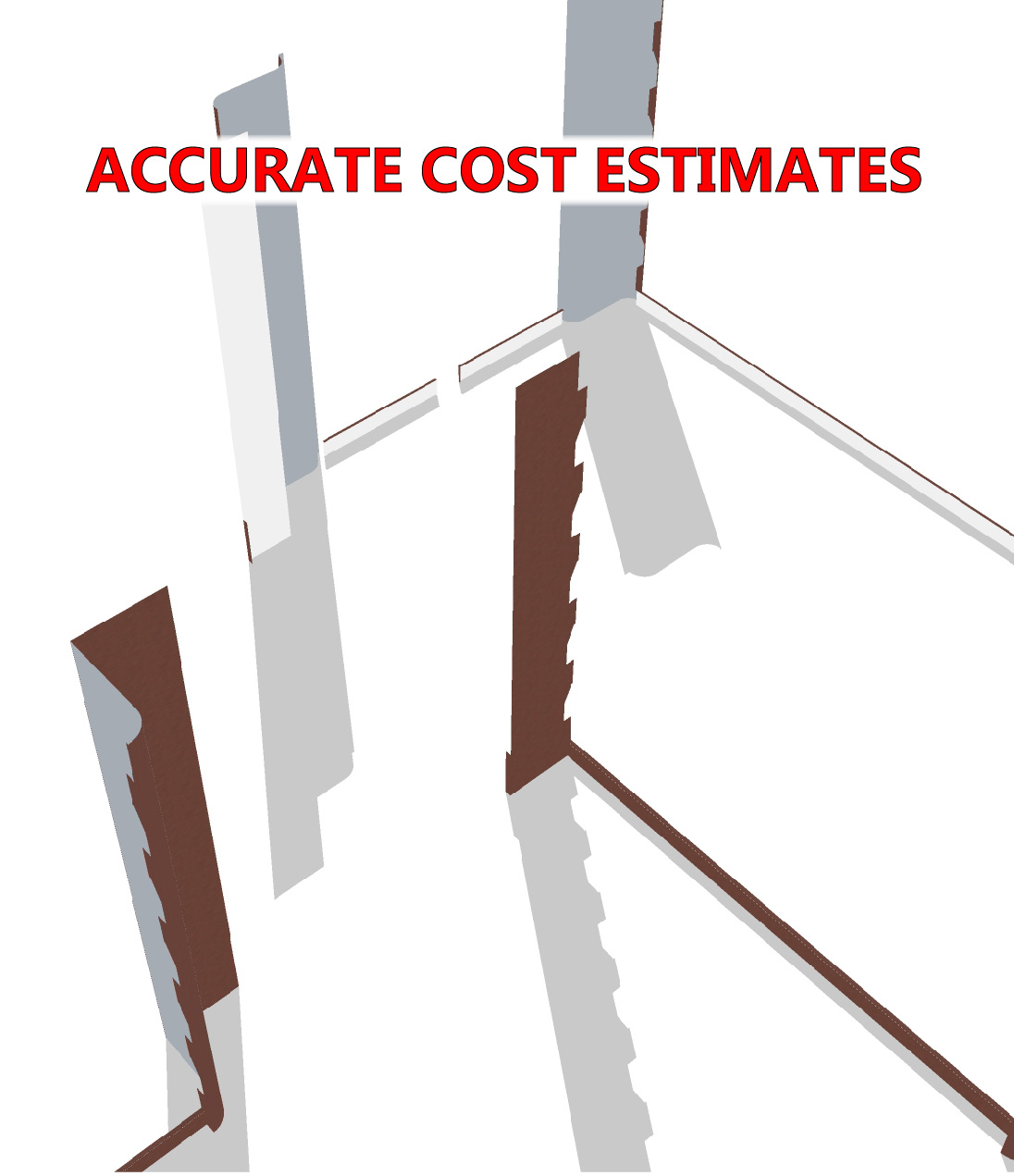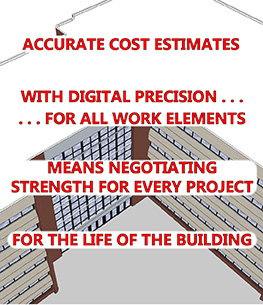A good rigger only needs a few knots in his repertoire. Technically he may not need to know more than one “knot” because a knot is just a “knob” or a stop in a line. Overhand Knots and Figure 8 Knots form a knob or a stop in a line. They are very simple and they have little utility.
Riggers use “loops”, “hitches” and “bends”, not “knots”. A loop is . . . a loop. A Bowline is an example.
A hitch is what you tie when you need to secure a line to a post or a rail or a cleat. When you tie your horse to the rail outside the saloon you are setting a hitch. If the handle isn’t a toggle, the line between the boat and the water skier is tied to the skier’s handle with a hitch.
A bend is how the end of one line is secured to another. A Square Knot is a bend, as are Sheet Bends, which are pictured below.
There are hundreds, if not thousands, of specialty knots for different vocations and professions and the rigger needs a few of those. For example, the Prusik, which is pictured below, was first used by climbers but it is useful as a strain relief for power cords and for lifting heavy cable and tubular items.
Bowline Animated Demonstration at AnimatedKnots.com
If a prusik is used for lifting a long tube or pipe it can be slid to the center of gravity of the load before lifting to balance the weight.
Prusik Animated Demonstration at AnimatedKnots.com
Clove Hitch Animated Demonstration at AnimatedKnots.com
Square Knot (used as a bend, not for binding) Animated Demonstration at AnimatedKnots.com
Sheet Bend Animated Demonstration at AnimatedKnots.com
